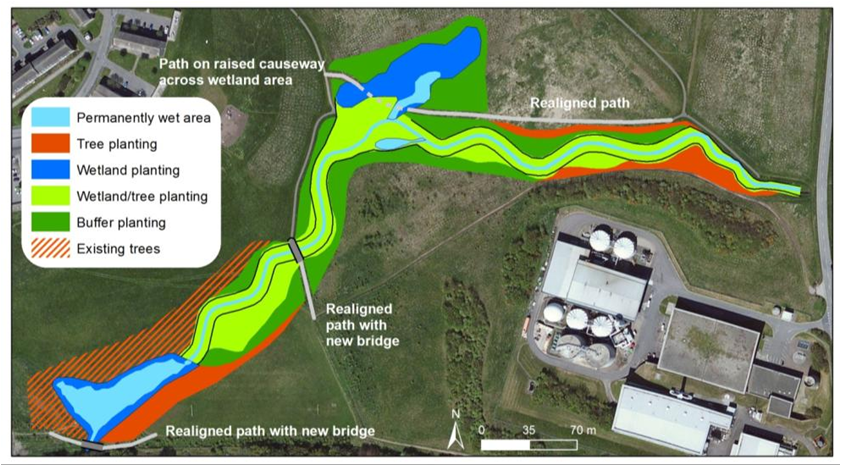

Salix has worked with Aberdeen City Council, cbec and Walking-the-Talk to restore the East Tullos Burn in St Fittick’s Park, Torry, transforming it from a straight, hard-engineered channel into a more natural stream with a meandering course, functional floodplain and improved wetland habitats.
Following consultation with the local community and stakeholders, the burn’s restoration design was finalised in 2013 and work on the ground began in March 2014, with cbec leading the management and Salix delivering the construction.
An important design element of the £300,000 project was the creation of wetlands and associated off‐channel features to provide the same function as a Sustainable Urban Drainage System (SuDS), but in a more aesthetic and natural way.
David Holland, Technical Director for Salix, explains: “Over the years, the East Tullos Burn had been straightened and over-deepened, resulting in a degraded channel and low biodiversity.
[efscolumn lg=”8″ md=”8″ smoff=”0″ mdoff=”0″ lgoff=”0″ ]
“Working with our partners, we widened the burn’s floodplain, restored flow diversity to the channel, created a number of swales to connect existing off-line wetlands and installed a new online wetland.
These new wetland features will increase the flood plain storage and water retention time, leading to better water quality in the catchment.
Biodiversity will be improved by the new wetland habitats that have been created, trees planted and 150,000 new native wetland and wildflower plants planting. In addition, we have seeded two hectares of excess soil heaps with perennial and annual wildflower seeds supplied by Scottish Wildflower seed supplier Scotia Seeds.
As well as creating valuable new wildlife habitats, the plants will provide nutrient and pollutant buffering and they will enhance the hydromorphology of this important, but previously neglected waterway.”
[efscolumn lg=”4″ md=”4″ smoff=”0″ mdoff=”0″ lgoff=”0″ ]

A new wooden footbridge has also been installed and the area’s footpaths have been upgraded, improving public access to the burn and its wildlife.
Funding for the restoration project, which was completed in June 2014, was supplied by the Scottish Environment Protection Agency’s Water Environment Fund, Aberdeen Greenspace Trust, Total E&P UK Limited, Aberdeen Forward, and the North East Scotland Biodiversity Partnership.





